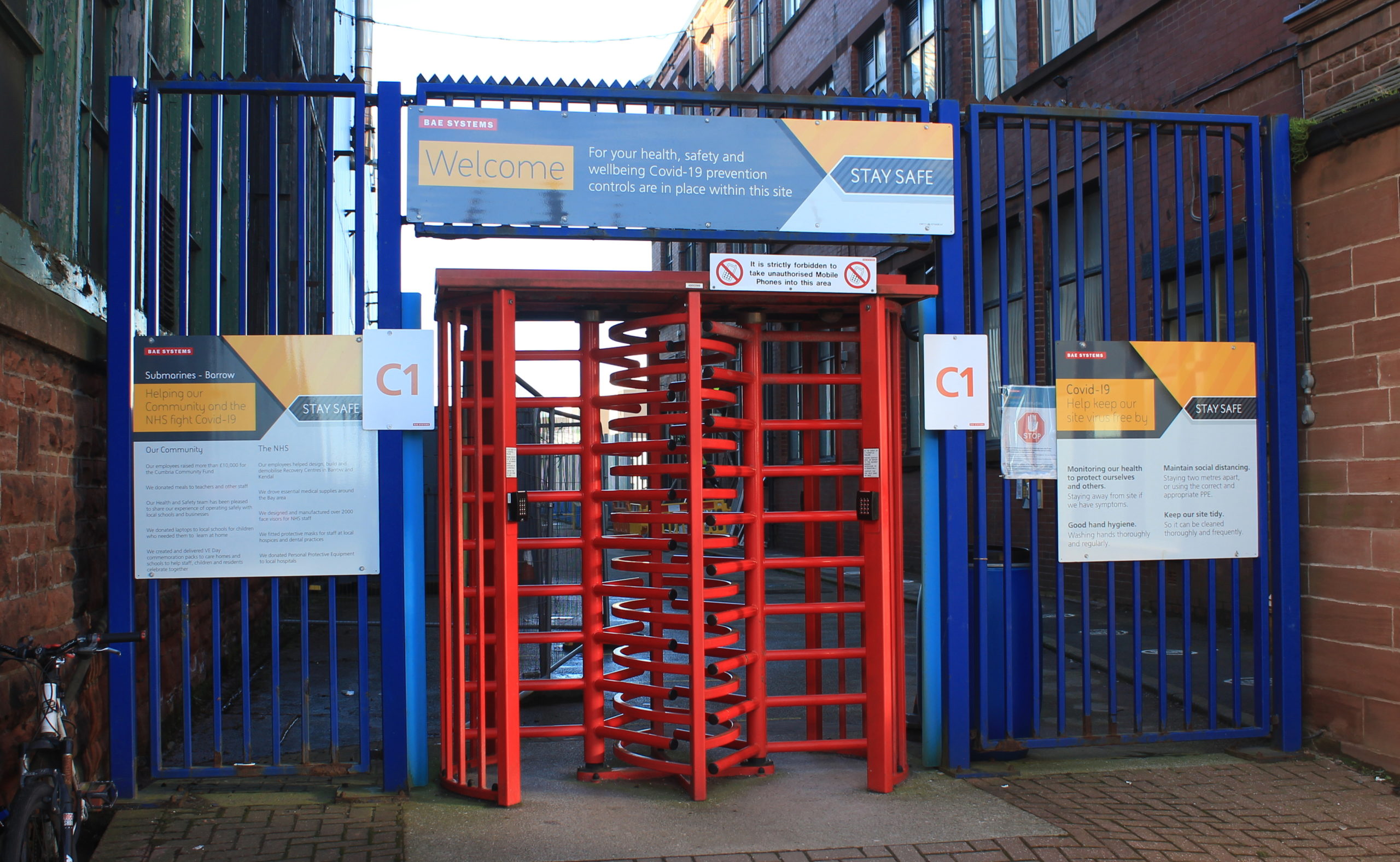The Ministry of Defence (MOD) has told Parliament that the Dreadnought submarine programme has been delayed for one year due to the coronavirus crisis, in an update in late December. The delay means Delivery Phase 2 of the project will continue until March 2022, rather than March 2021.
According to the MOD the delay is due to “the high-levels of uncertainty caused by the pandemic, and the short to medium term uncertainty in Industrial Partners and Supply Chains”. It is impossible to know whether the in-service date for HMS Dreadnought, the first submarine, has also been delayed by a year because in recent times the MOD have not made the date public. The update says the submarine is “on track…to enter service in the early 2030s.”
A freedom of information release from the Office for Nuclear Regulation (ONR) shows substantial numbers of staff were self-isolating at nuclear weapons sites during the first wave of coronavirus cases. The Atomic Weapons Establishment and BAE Systems at Barrow-in-Furness were particularly badly affected. On 2nd April 2020, when numbers of staff self isolating were highest at the two sites, the number at AWE was 596 and the number at Barrow was 1,713. This represents over 10% of the approximately 5,000 staff and contractors working at AWE and 9,500 working at BAE Systems.
Both sites were reported to have outbreaks at the time, but the numbers of staff self-isolating was not made public. The numbers at Rolls-Royce in Derby, Devonport and Rosyth, which were also disclosed by ONR, were below 70 at all times. ONR stopped collecting detailed figures from the sites on 13th May, and NIS understands that only summary information was collected for the remainder of 2020.
The delay raises the question of whether the current fleet of Vanguard submarines can be kept in service over the time it takes to build the Dreadnought fleet. Reports by both NIS and the British American Security Information Council (BASIC) have raised the possibility that reliability issues may make it difficult for the MOD to permanently keep a nuclear-armed submarine at sea in the early 2030s.
When initial work on the Dreadnought programme was first approved by parliament in 2007 the planned date for the first submarine to come into service was 2024. In 2010 the date was moved back to 2028, and in 2015 the current formulation of the “early 2030s” was introduced. The Vanguard fleet was originally designed for a 25 year service life. HMS Vanguard, the oldest of the fleet, will be 37 years old in 2030.
Spending on the Dreadnought programme is approved in stages, rather than the ‘main gate’ approval structure that is more common and was originally intended for the project. This change is widely thought to be an attempt to avoid the cost overruns and delays that have dogged the Astute submarine programme. In phase two of the Dreadnought programme, which has now been extended, construction of hull sections for the second Dreadnought submarine began. Fabrication of hull sections for HMS Dreadnought has been completed, but assembling the sections together will only begin once space has been vacated by one of the Astute submarines currently under construction. The government began withholding the official completion date for the Astute submarine programme after HMS Audacious was delayed for 17 months.
